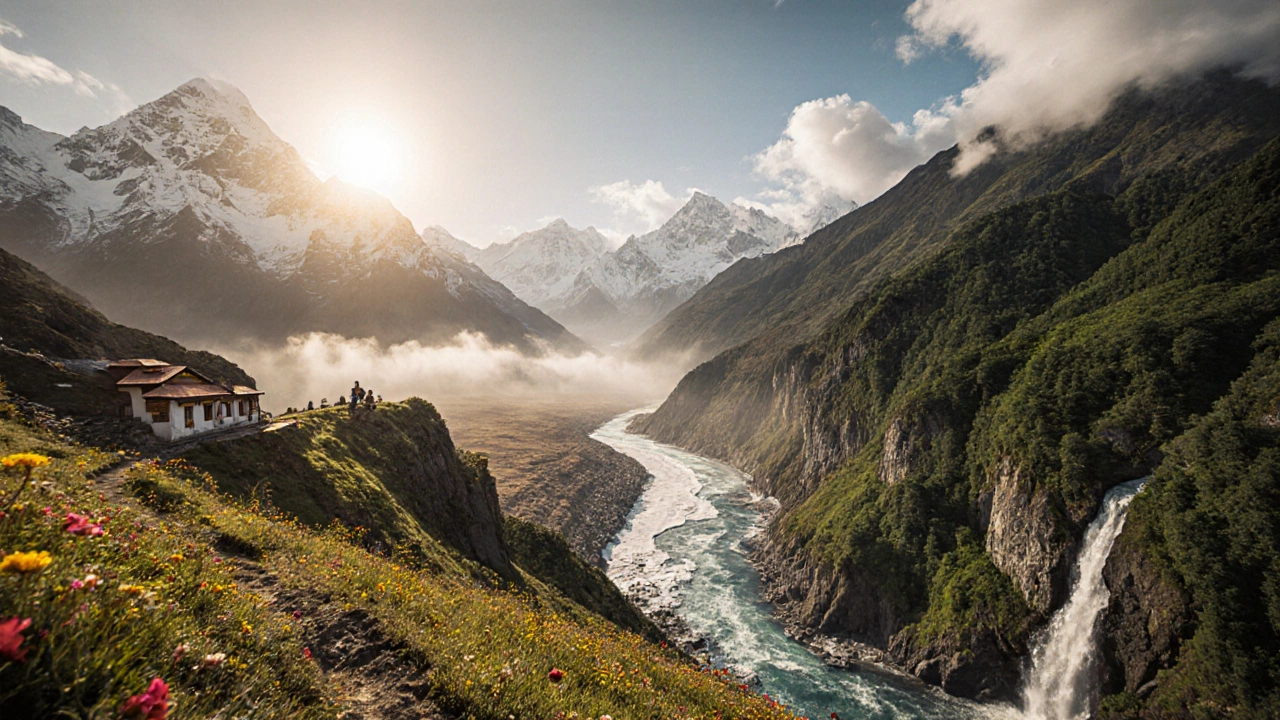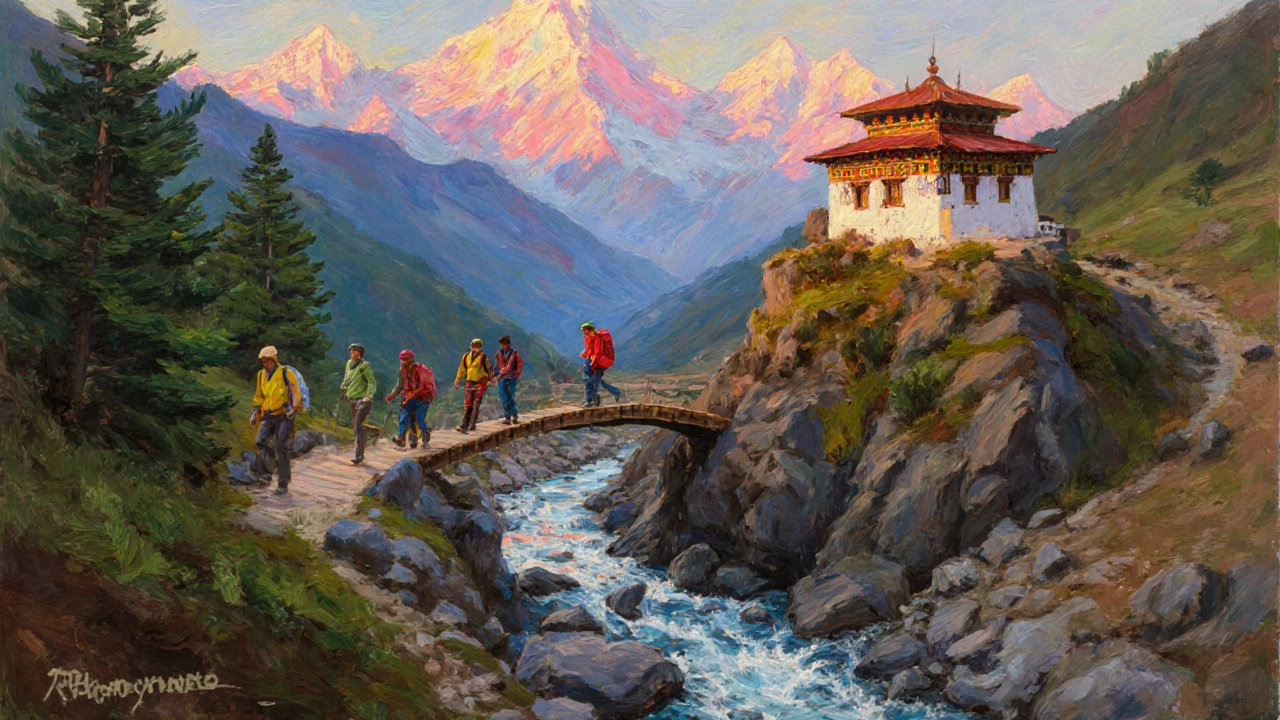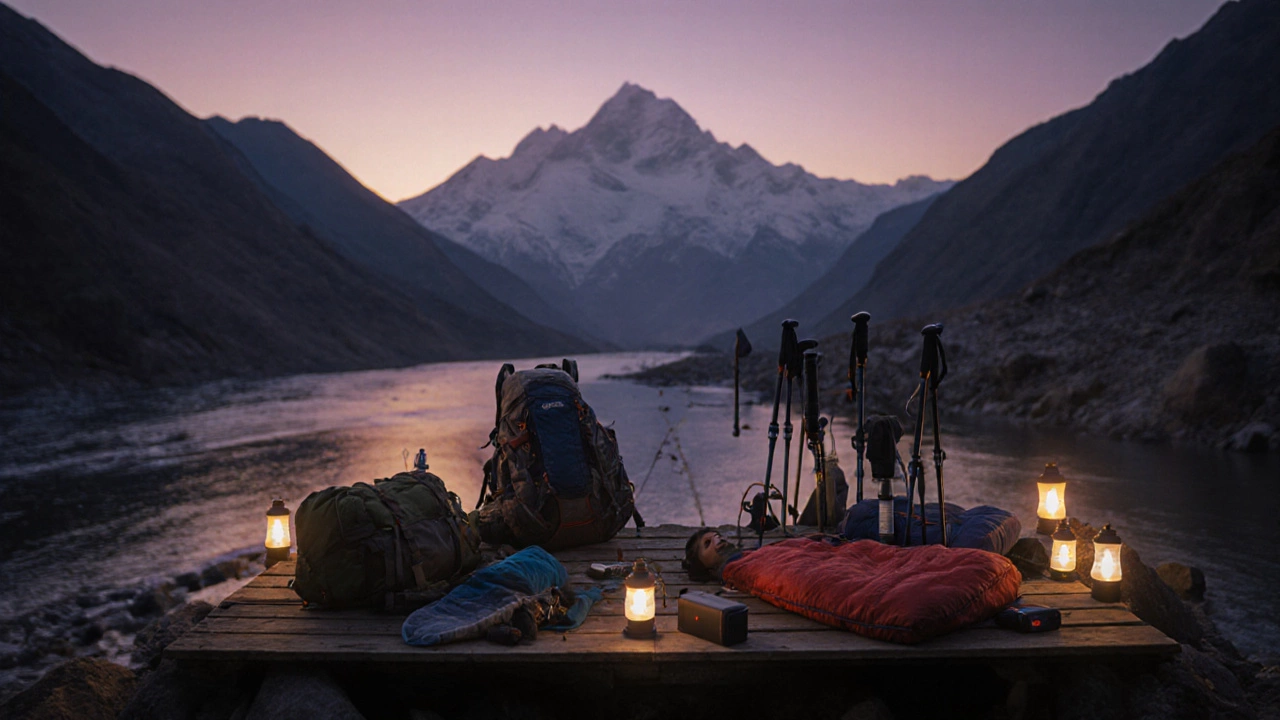Discover India’s Top Trekking State: A Complete Guide to the Best Trails

Top Trekking States in India - Interactive Comparison
How We Rank the States
We evaluated each state based on four core criteria:
- Scenic Variety: Range of landscapes – mountains, forests, rivers, and cultural sights.
- Trail Quality & Infrastructure: Marked paths, availability of tea houses or huts, and local guide services.
- Seasonal Accessibility: How many months a year the main routes are safe and enjoyable.
- Difficulty Spectrum: Whether the state offers options for beginners up to advanced climbers.
Each state received a score out of 10 for every criterion, and the totals determined the ranking.
If you’re hunting for the best trekking state India can offer, you’ve landed in the right spot. From snow‑capped Himalayan passes to the misty hills of the Western Ghats, the country packs a staggering variety of trails that suit every skill level. This guide breaks down the top trekking states, explains how we rank them, and gives you a ready‑to‑use checklist so you can start planning your next adventure without a hitch.
Key Takeaways
- Himachal Pradesh and Uttarakhand dominate the Himalayan trekking scene with world‑renowned routes like Hampta Pass and Valley of Flowers.
- Ladakh offers high‑altitude, desert‑mountain trekking that combines stark beauty with cultural immersion.
- Sikkim’s less‑crowded trails provide a mix of snow‑capped peaks and vibrant Buddhist monasteries.
- Maharashtra and Kerala showcase the tropical side of trekking, featuring the Western Ghats' lush plateaus and waterfalls.
- Every state listed has decent trail infrastructure, reliable guide networks, and clear seasonal windows.
How We Rank the States
We looked at four core criteria that matter most to trekkers:
- Scenic Variety: Range of landscapes - mountains, forests, rivers, and cultural sights.
- Trail Quality & Infrastructure: Marked paths, availability of tea houses or huts, and local guide services.
- Seasonal Accessibility: How many months a year the main routes are safe and enjoyable.
- Difficulty Spectrum: Whether the state offers options for beginners up to advanced climbers.
Each state received a score out of 10 for every criterion, and the totals determined the ranking.
1. Himachal Pradesh is a northern Indian state famed for its towering peaks, verdant valleys, and a robust trekking ecosystem.
Highlights:
- Iconic trek: Hampta Pass (12km, moderate, 4-5days) - a classic route that flips from lush green to stark alpine.
- Peak altitude: 4,500m at Deo Tibba.
- Best months: Late May to early October.
- Infrastructure: Well‑marked trails, permanent tea houses at key waypoints, and a network of licensed guides.
The state also hosts the famous Triund trek near Dharamshala, a perfect night‑under‑stars experience for first‑timers.
2. Uttarakhand is a Himalayan state that blends spiritual pilgrimages with rugged mountain trekking.
Highlights:
- Iconic trek: Valley of Flowers (15km, easy‑moderate, 5-6days) - a UNESCO World Heritage site blooming with alpine flora.
- Peak altitude: 6,816m at Nanda Devi (base‑camp routes accessible up to 5,500m).
- Best months: June to September for most high‑altitude trails.
- Infrastructure: Government‑run forest department camps, regular ambulance drops, and a plethora of local guides.
For adrenaline junkies, the Roopkund trek provides a chilling glimpse of a 900‑year‑old skeleton lake at 5,029m.

3. Ladakh is a high‑altitude desert region in the northernmost part of India, offering stark mountain scenery and Tibetan‑influenced culture.
Highlights:
- Iconic trek: Chadar Trek (frozen Zanskar River, 105km, high‑altitude, 9-10days) - trek on a river of ice.
- Peak altitude: 5,600m at Stok Kangri (now closed for climbing, but surrounding valleys remain popular).
- Best months: June to early September (avoid monsoon‑related landslides).
- Infrastructure: Limited tea houses; most trekkers rely on home‑stays and camping gear.
Ladakh’s Buddhist monasteries, such as Hemis and Thiksey, add cultural depth to any trek.
4. Sikkim is a compact Himalayan state bordering Nepal, Bhutan, and Tibet, known for pristine wilderness and low‑crowd trails.
Highlights:
- Iconic trek: Goecha La (22km, moderate‑hard, 6-7days) - offers close views of Kanchenjunga, the world’s third‑highest peak.
- Peak altitude: 5,300m at Dzongri.
- Best months: April to early June and September to November.
- Infrastructure: Permits required (online), modest tea houses, well‑trained local guides.
The state’s rich Buddhist heritage means trekkers often pass ancient gompas and prayer flags.
5. Maharashtra hosts the Western Ghats’ evergreen forests, towering waterfalls, and rugged basalt cliffs, making it the go‑to for tropical trekking.
Highlights:
- Iconic trek: Rajmachi Fort (7km, easy, 2-3days) - combines historic forts with rainforest trails.
- Peak altitude: 1,450m at Kalsubai, the state’s highest point.
- Best months: October to February (dry season).
- Infrastructure: Good road access, plenty of budget lodges and private homestays.
The monsoon season (June‑September) transforms trails into slippery waterfalls, which some trekkers enjoy for a different challenge.
6. Kerala offers the southern end of the Western Ghats, where misty peaks meet tea‑plantation valleys and cascading waterfalls.
Highlights:
- Iconic trek: Meesapulimala (10km, moderate, 3days) - the highest peak in the state, perched at 2,640m.
- Peak altitude: 2,640m at Meesapulimala.
- Best months: September to February (post‑monsoon freshness).
- Infrastructure: Well‑maintained trekking routes, tea‑garden guesthouses, and easy public transport.
Kerala’s backwaters and spice plantations make for a perfect post‑trek relaxation spot.

Comparison Table
| State | Avg. Peak Elevation (m) | Best Trek Season | Trail Difficulty Range | Infrastructure Score (out of 10) | Signature Trek |
|---|---|---|---|---|---|
| Himachal Pradesh | 4,500 | May‑Oct | Easy‑Hard | 9 | Hampta Pass |
| Uttarakhand | 5,500 | Jun‑Sep | Easy‑Hard | 9 | Valley of Flowers |
| Ladakh | 5,600 | Jun‑Sep | Moderate‑Very Hard | 6 | Chadar Trek |
| Sikkim | 5,300 | Apr‑Jun / Sep‑Nov | Moderate‑Hard | 8 | Goecha La |
| Maharashtra | 1,450 | Oct‑Feb | Easy‑Moderate | 8 | Rajmachi Fort |
| Kerala | 2,640 | Sep‑Feb | Easy‑Moderate | 8 | Meesapulimala |
Practical Tips for Trekking Anywhere in India
Regardless of the state you choose, these pointers keep you safe and comfortable:
- Permits: Most Himalayan treks require a Forest Department or Inner Line Permit; the process is now online for Himachal, Uttarakhand, Sikkim, and Ladakh.
- Acclimatization: Gain 1‑2days at base altitude before tackling anything above 3,500m.
- Gear Essentials: Sturdy trekking boots, layered clothing, waterproof jacket, headlamp, and a compact first‑aid kit. For high‑altitude routes, add a sleeping bag rated to -10°C.
- Local Guides: Hiring ASI‑registered guides not only supports the community but also adds local knowledge about weather shifts and trail shortcuts.
- Health Precautions: Carry a basic list of altitude sickness symptoms; bring acetazolamide if you’re prone to headaches.
- Leave No Trace: Pack out all waste, avoid single‑use plastics, and stick to marked paths to preserve fragile ecosystems.
Quick Trekking Checklist
- Confirm permit requirements and apply online at least two weeks ahead.
- Book a reputable guide or trek agency (check reviews on platforms like Tripoto or Lonely Planet forums).
- Test your boots on a day‑long hike with a fully loaded pack.
- Pack layered clothing: base layer, insulating mid‑layer, waterproof outer shell.
- Prepare a daily water‑filter or purification tablets (most mountain streams are clear but may carry microbes).
- Load emergency contacts, GPS coordinates, and a portable power bank onto your phone.
- Review the trail’s altitude profile; schedule rest days every 600‑800m gain.
Next Steps: Planning Your First Indian Trek
1. Pick a state that matches your fitness level and scenery cravings.
2. Use the comparison table to narrow down a signature trek.
3. Check the seasonal window and book permits early.
4. Reach out to local guide agencies - a quick email with your dates and experience level usually gets a response within 24hours.
5. Assemble gear, run a short test hike, and you’re ready to hit the trail.
Frequently Asked Questions
Do I need a permit for every trek in India?
Most Himalayan treks (e.g., in Himachal, Uttarakhand, Sikkim, and Ladakh) require a Forest Department or Inner Line Permit. The paperwork is now online and usually costs between ₹300‑₹1,000. In contrast, Western Ghats routes in Maharashtra and Kerala have no permits, only local forest office notifications.
What is the safest time of year for high‑altitude treks?
June to early September is the safest window for most high‑altitude trails because the snow has melted but the monsoon hasn’t fully arrived. In Ladakh, aim for July‑mid‑August to avoid sudden snowstorms.
Can I trek solo without a guide?
Solo trekking is possible on well‑marked, low‑traffic routes like Triund (Himachal) or Rajmachi (Maharashtra), but for anything above 3,500m you should hire a registered guide for safety and navigation.
What altitude sickness symptoms should I watch for?
Typical signs include headache, nausea, dizziness, and shortness of breath at rest. If symptoms worsen after a day, descend 500‑800m immediately and seek medical help.
Is travel insurance needed for trekking?
Yes. Choose a policy that covers high‑altitude evacuation, medical treatment, and trip cancellation. Many insurers have specific “adventure sport” add‑ons for treks above 3,000m.